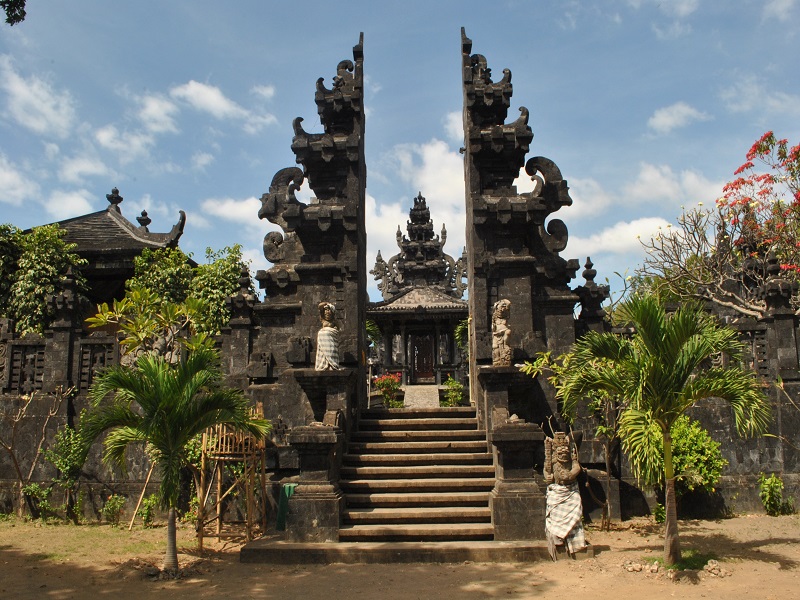Hey there! Have you ever seen the beautiful traditional houses of Bali? I mean, they are absolutely stunning! And did you know that there's a whole bunch of meaning and philosophy behind them? It's amazing what you can learn when you take a closer look. First up, let's talk about the design. Balinese traditional houses are known for their open floor plans and thatched roofs made from alang-alang grass. They are designed to be airy and cool, which is perfect for the hot and humid climate in Bali. And the intricate carvings and decorations on the homes are just stunning! They often depict Hindu mythology and themes. But it's not just about looks, there's also a lot of meaning behind these homes. For example, the design of the home is meant to reflect the balance between the spiritual and physical worlds. The open floor plan allows for good ventilation and natural light, which is believed to bring positive energy into the home. And the thatched roofs symbolize humility and respect for nature. Now let's move on to another type of traditional Indonesian architecture - the candi. Candi is a term used in Java to describe ancient temple structures built during the Hindu-Buddhist era. These structures are absolutely breathtaking, with intricate carvings and exquisite details. One example is the Candi Bentar, which is a split gate that is often found at the entrance of ancient temple compounds. Its purpose is to signify the division between the secular and spiritual worlds. The left gate represents the physical world, while the right gate represents the spiritual world. It's a powerful sign of balance and harmony. Now I know what you're thinking - this all sounds amazing, but how can I recreate this at home? Well, lucky for you, I've got a recipe for some delicious Indonesian-inspired cuisine that will transport you straight to Bali. First up, we've got some Nasi Goreng - a classic Indonesian fried rice dish. Ingredients: - 2 cups of cooked rice - 2 cloves of garlic, minced - 1 onion, chopped - 1 red bell pepper, diced - 1 green onion, chopped - 2 tablespoons of vegetable oil - 2 tablespoons of soy sauce - 1 teaspoon of chili flakes - Salt and pepper to taste Instructions: 1. Heat up the oil in a large skillet over medium-high heat. 2. Add in the garlic and onion and sauté until the onion is translucent. 3. Add in the red bell pepper and cook until softened. 4. Add in the cooked rice and stir well, making sure it's evenly coated in the oil and vegetables. 5. Add in the soy sauce, chili flakes, salt, and pepper and continue to cook for another 2-3 minutes. 6. Serve with a sprinkle of green onions on top. And there you have it - a taste of Indonesia right in your own kitchen! I hope you've enjoyed learning about traditional Indonesian architecture and trying out some delicious Indonesian cuisine. Until next time, keep on exploring!
If you are searching about 10++ Rumah Adat Bali - Sejarah, Makna, Filosofi, Gambar & Penjelasan you've came to the right page. We have 3 Pics about 10++ Rumah Adat Bali - Sejarah, Makna, Filosofi, Gambar & Penjelasan like Aku Pasti Bisa: Rumah Adat Indonesia, 10++ Rumah Adat Bali - Sejarah, Makna, Filosofi, Gambar & Penjelasan and also Mengenal Candi Bentar Yang Ada di Rumah Adat Bali | Indonesia Traveler. Here you go:
10++ Rumah Adat Bali - Sejarah, Makna, Filosofi, Gambar & Penjelasan
 rimbakita.com
rimbakita.com adat sejarah penjelasan
Aku Pasti Bisa: Rumah Adat Indonesia
 nataliasrilestari.blogspot.com
nataliasrilestari.blogspot.com candi bentar adat gapura pasti bisa samawa barat nusa tenggara loka ukiran
Mengenal Candi Bentar Yang Ada Di Rumah Adat Bali | Indonesia Traveler
 indonesiatraveler.id
indonesiatraveler.id candi bentar gapura adat pulau arsminimalis filosofi angkul pintu dewata kemendikbud budaya indonesiatraveler seringjalan mengenal pariwisataindonesia makna sketsa cagar pelestarian
Candi bentar adat gapura pasti bisa samawa barat nusa tenggara loka ukiran. Candi bentar gapura adat pulau arsminimalis filosofi angkul pintu dewata kemendikbud budaya indonesiatraveler seringjalan mengenal pariwisataindonesia makna sketsa cagar pelestarian. Aku pasti bisa: rumah adat indonesia